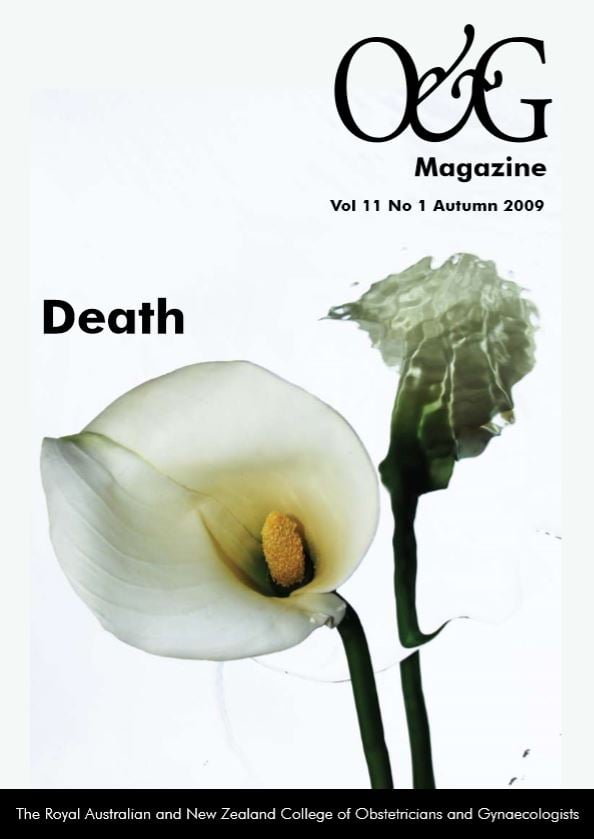It is an inescapable reality that eventually life will end in death and at some point all doctors will be required to provide care for a dying person. To adequately provide care, doctors must be able to recognise that death is imminent, to communicate this to other professionals and lay people, and if necessary, provide care to ensure the dying person’s comfort, without imposing unnecessary burdens.
Care of a dying person
Paradoxes may confront doctors when caring for dying people. Modern medicine concentrates on achieving cures through diagnostic and therapeutic interventions, with death viewed as an implicit failure of the doctor’s care. New problems or changes in a person’s health usually prompt more investigations and treatments, which may not only be futile, but burdensome for the person. The optimal approach at the very end of life may be to exercise clinical judgements, relying on excellent bedside clinical assessments, providing meticulous pain and other symptom control through the most non-invasive means, whilst concurrently considering the emotional and existential issues of the dying person and those around them.1
Diagnosing dying
At any point in disease trajectories, the best care is delivered when the correct diagnosis is known and care of a dying person is no different. Clinical features that suggest death is imminent have been summarised and include:
- changes in functional state, where the person becomes increasingly more frail and entirely bed-bound in the last hours or days of life;
- fluctuating levels of consciousness; and
- an inability to take oral fluid, food or medications.
In the last hours of life, other changes which commonly occur include:
- altered respiratory patterns with marked mandibular movements;
- noisy, gurgling respirations sometimes called the ‘death rattles’ and;
- Changes to the peripheral circulation, with decreased pulse pressure and acrocyanosis.
There are wide variations in the changes observed in individuals and the timeframes over which such changes may develop.2
Symptom control at the end of life
Some people may develop symptoms that appear to be distressing at the very end of life. The most common problems observed by professional and lay caregivers include pain, dyspnea and respiratory secretions, agitation and confusion, dry mouth and continence. Of these, pain, respiratory changes and agitation are the most likely to concern relatives. Clinicians need to be cognisant of the fact that these problems may arise and have plans in place that may be readily implemented should these problems arise. There is little evidence to describe what the dying person’s experiences of these symptoms might be. However, interventions are still given, as the little evidence that is available supports better outcomes for bereaved relatives when attention to symptoms perceived to be distressing is given.3
Management of specific symptoms
Pain is a common and feared problem for people with advanced cancer and other terminal diseases. There is no doubt that pain accompanies terminal illness, but pain that continues to crescendo upwards in the last hours of life is uncommon. Paradoxically, co-existing with the reality of pain is the fear that appropriately treating pain with opioid analgesia may hasten death. However, there is no evidence to support this4 and many clinicians have concerns that the opposite is more likely.
All people in the terminal phase of life must have access to pain relief should they require it. At this stage, the medications most likely to be used are opioid analgesics, with the preferred route of administration being the subcutaneous route, though in some people, topical or intravenous opioid analgesia may be effective. Opioid naïve patients may only require low doses, such as morphine 2 mg fourth hourly. Others who have been previously taking opioid analgesia require conversion of the oral medication to either the subcutaneous or topical route of administration, using accepted opioid conversion tables. Excellent published guidelines are readily available to assist clinicians in safe and reliable prescribing at this stage of life.5,6,7
Agitation or confusion occurs commonly at the end of life, probably representing as delirium in up to 80 per cent of people. Terminal delirium may be hypoactive or hyperactive and is commonly associated with hallucinations and delusions that may or may not be distressing to the dying person and those around them. The decision to intervene must be based on a clinical assessment of how distressing or harmful the confusional state is to the person and those around them. Even though life is short, consideration of easily reversible factors must be given, although invasive investigations are probably best avoided. Non-pharmacological management of terminal delirium is often ignored, but should be considered as other situations may modify distress without causing further harm. A thorough physical examination to exclude urinary retention or faecal impaction as easily reversible causes of agitation is strongly recommended.
Following this, mostly, the management of terminal delirium focuses on prescribing antipsychotic medications, such as haloperidol and chlorpromazine, with benzodiazepines commonly as adjuvants in terminal care when people are very agitated or restless.8 However, the evidence for any of these interventions remains limited and further research is needed.
Respiratory changes are common at the very end of life and include altered breathing patterns and the development of noisy respirations. The underlying pathophysiology that accounts for the changes in the patterns of respiration is not known, but is likely to reflect significant underlying metabolic changes associated with dying. Changes in the patterns of respiration are often accompanied by gurgling respirations that are sometimes known as the ‘death rattles’. Again the aetiology of these noises is not well understood but probably reflects loss of gag and cough reflexes. It is likely that other secondary changes of airway narrowing contribute as well.
The evidence-based management of dyspnea in palliative care is improving and it is reasonable to extrapolate that even in the very final stages of life, subcutaneous morphine may alleviate the distress of breathlessness. This is in contrast to the management of noisy secretions. So far, none of the agents in common use have been proven to reliably reduce the noises. Despite this, accepted management remains that if the noises are proving very distressing to the person or those around them, interventions both pharmacological and non-pharmacological are indicated. Non-pharmacological intervention includes reducing parenteral fluids, positioning changes and gentle oropharyngeal suctioning. Pharmacological interventions include the subcutaneous administration of agents such as hyoscine or glycopyrrolate.9
A dry mouth is common at the end of life. This may be a source of distress for families and carers who see this as a symbol of the person starving to death. There are numerous reasons for a dry mouth and these include mouth breathing, decreased ability to manage oral fluids and hygiene, and anticholinergic effects of medications. The appearance of a dry and caked mouth may lead families to request parenteral hydration. However, the current literature would not suggest that this is likely to improve this problem. The best approach to this may be to discuss the problem with families and caregivers and to recommend regular mouth care. The best agent is not clear, but alcohol containing preparations are best avoided.
Conclusion
The most effective approach to terminal care requires acknowledgment and agreement that death is imminent in the terminally ill person. This is imperative to allow the delivery of the most competent and compassionate care, not only to the dying person, but to those around them.
References
- Barbato M. Caring for the dying: the doctor as a healer. MJA 2003; 178 (10): 508-509.
- Glare P. Clark K. Management of a patient with terminal illness: the final stages of life. Medicine Today 2008 9(6): 40-48.
- Higginson IJ, Finlay IG, Goodwin DM, Hood K, Edwards AG, Cook A, et al. Is there evidence that palliative care teams alter the end of life experiences of patients and their caregivers? Journal of Pain and Symptom Management. 2003 Feb; 25(2):150-68.
- Sykes N, Thorns A. The use of opioids and sedatives at the end of life. Lancet Oncology 2003; 4:312-318).
- The medical care of older persons in residential aged care facilities, Royal Australian College of General Practitioners 4th edition 2006 RACGP.
- Ellershaw J, Ward C. Care of the dying patient: the last hours or days of life. BMJ 2003; 7379):30-3.
- Adams J. ABC of Palliative Care: the last 48 hours of life. BMJ 1997 315(7122): 1600-1598.
- Gagnon PR. Treatment of delirium in supportive and palliative care. Current Opinion in Supportive and Palliative Care. 2008 Mar; 2(1):60-6.
- Plonk W, Arnold R. Terminal Care: the last weeks of life. Journal of Palliative Medicine 2005; 8(5):1042-1053.






Leave a Reply